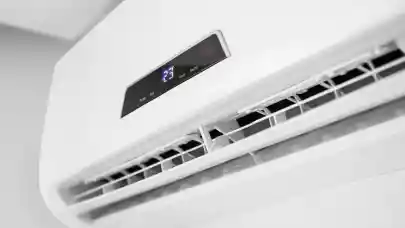
The cooling of homes is not one of the amenities that official statistics look at in housing, unlike, for example, heating or running water. In the past, it was not taken into account to such an extent that even the censuses before the one in 2022 did not include it in the census of housing. However, the KSH did have a statistic that counted the prevalence of air conditioners as a consumer durables item. This shows that in 2010, merely 4% of dwellings in Hungary were equipped with air conditioners, which ratio rose to 14% by 2020 and, according to last year's census, jumped to nearly 27% in 2022.
Although these two figures (household vs. dwelling-based measurement) are not directly comparable, they clearly indicate that revolutionary changes in the cooling of Hungarian homes took place at the beginning of the decade. In this period, around half a million new or modernised homes were equipped with A/Cs.
According to Dávid Valkó, Senior Analyst at OTP Ingatlanpont, there is no need to look for a single reason behind the huge growth. "This exceptional match of demand and opportunity could be the result of a combination of factors." Among them, the most important is probably the fact that the impact of climate change is being felt in everyday life as the summers get hotter.
This was reinforced by the COVID-19 pandemic, which left people confined to their homes for long periods. This has made it harder to cope with the heat, but it has also provided an incentive for small improvements that can make a home more comfortable and crisis-resistant.
Air conditioning was not the only option at that time, because it could help to cope with heat waves. These devices have come a long way in the last 2-3 decades: while their energy consumption has fallen, their capabilities have increased and their cooling-heating versions have made it possible to increase the comfort of a home in winter. Therefore, such an upgrade could be a sensible investment not only for the people who own their homes but also for those who rent them out.
In addition to the relative cheapness, air conditioning could also be driven by the fact that such improvements were eligible for Home Renovation Grants. New homes were originally planned to be required to have a minimum energy efficiency level of BB from 2021, which, in addition to good insulation, also required the building to use renewable energy sources, which the heat pump air-conditioners could deliver.
Although the introduction of this requirement has been postponed several times, with a grace period currently running until June 2024, the jump in the installation of A/Cs in homes has so far been led by newly built properties. while only 25% of homes built before 2010 had air conditioning, this figure has risen to 56% for homes delivered after 2010.
Although the prevalence and the dynamics of these devices vary considerably from one country to another, air conditioning is now an almost mandatory feature of modern homes in most parts of the country. Regional differences in this respect are not only explained by financial resources and the general rate of renewal of the local housing stock but also by natural conditions.
There are three parts of the country where even homes built before 2010 have a high level of A/C use. In Budapest (35%), the stifling effect of urban heat islands and better financial opportunities have made this possible, Csongrád-Csanád (32%) is the most sunny area, while wealthy residents of the capital who demanded higher comfort started moving further away from central Budapest in Pest county (30%) already in the 1990s.
Dwellings built after 2010 have also put other areas, typically in the Great Plain (Alföld) area, high on the national A/C map. In addition to the capital city and Csongrád, 60-67% of the population in Bács-Kiskun, Baranya, Hajdú-Bihar, Jász-Nagykun-Szolnok and Szabolcs-Szatmár-Bereg had such equipment.
This is broadly in line with the natural conditions: the south-eastern-central part of the country receives the most sunshine during the year, and in summer there are fewer clouds above the plains that filter the sunlight.
Accordingly, the proportion of houses built before 2010 using air conditioning is also lowest in the western periphery of the country, at the feet of the Alps ("Alpokalja") and northern mountain areas: 9% in Nógrád, 13% in Vas and 14% in Borsod-Abaúj-Zemplén. For new homes delivered after 2010, natural conditions continue to dominate, with the same three counties at the bottom of the list: Nógrád 29%, Vas 42% and Borsod-Abaúj-Zemplén 44%.



